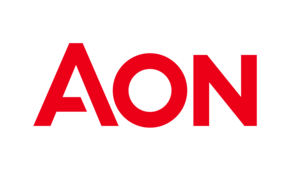
Michael Walker - Associate Partner and Senior Risk Settlement Adviser at Aon
Knowing where to start when forming a comprehensive endgame strategy for your pension scheme can sometimes feel like playing a game of chess - only you don't know all the rules. You know there is an end result you want to achieve but not which moves to make, and in which order. Luckily, though, there is a host of people who have played the game before who are willing to help. And in the game of pensions, those people often play the role of Risk Settlement specialists.
With a focus on long term funding targets being required of schemes by the Pensions Regulator, it's more important than ever that trustees and sponsors align their aims to create the best possible endgame strategy for their pension scheme. But where to start?
As with everything, it is best to start at the beginning and understand what options you have. A lot of this will be driven by your funding level, the risks and opportunities inherent in your current strategy, and level of sponsor backing. For every scheme feeling that tackling risks and prioritising actions is a hard task, there is another being guided through a series of steps to remove risk - and get ever closer to their endgame target.
So, what are the endgame options available to schemes? Well, ranking the most widely considered endgame options loosely in increasing cost and security, we have:
- Self-sufficiency - where schemes reach a level of funding on a low-risk basis which would allow the scheme to run on without the need for any further sponsor contributions. Under this option all of the risk remains with the scheme, but members and sponsors may gain, via increased benefits, lower cost of benefit provision or a refund of surplus.
- Superfunds - an option which has entered the market in recent years creating the opportunity for schemes to transfer pension risk out of their trust and off their employer's balance sheet to a third-party vehicle. This is typically relevant where the scheme is relatively well funded but the gold standard of securing liabilities with an insurer is still a long way off. For many schemes, however, this option is not yet being adopted with our recent research suggesting that less than 10% of schemes are likely to adopt this option
- Series of phased buy-ins - this is where a scheme may secure slices of liabilities with an insurer at times to suit their circumstances, steadily removing the investment, interest rate inflation and longevity risk in respect of the liabilities secured
- Full-scheme buyout - where all scheme liabilities are insured with the responsibility for running the scheme, and therefore the risk, passing from the trustees and sponsor to the chosen insurer
However, setting the end target is just the tip of the iceberg and there is a whole range of options that can be adopted along the journey to help you reach that target. Choosing the right end target and strategy to get there should be a collective decision between the trustees and sponsor, and one that is based on considering all the options available with an open mind.
Checking current funding levels on a solvency or long-term funding target basis is often the first action on a checklist for schemes assessing their proximity to an endgame target. However, there can be more to this than meets the eye with insurer/superfund pricing fluctuating, and a willingness for providers to sharpen their pencils for the best prepared schemes. This means that securing your scheme's future could be closer (and cheaper) than you think!
This is where Risk Settlement specialists can prove to be your very own Grandmaster in your corner. Understanding the full range of options open to your scheme and how these impact the cost of achieving your endgame can lead to win-win situations. For example, more and more schemes are offering members increased options for how they take their pensions. This introduces flexibility for members, while providing the opportunity to reduce risk and ultimate cost for the scheme. This may not be a good fit for everyone, but taking the time to understand the options in more detail can pay dividends both in creating better member outcomes and also in securing the best pricing when approaching the insurance/superfund market.
Key to all of this, is having a robust plan which will allow any strategy to run smoothly. So, whatever your plan, time invested early in creating key actions and understanding your priorities will allow decisions to be made efficiently and maximise their impact… and help capture the King!
Over the next 12 weeks we will be sharing a series of articles that will explore all of the different ways in which making better decisions can help you reach your endgame - and providing you with the tools to help you create your optimal strategy.
In the first instance, find out where your scheme is on its journey by completing this short online survey and benchmarking your scheme's progress on its journey to settlement. Shortly after completion, you will receive a personalised report showing where you are on your journey together with some suggested next steps to keep you on the right path.
Checkmate.
This post is funded by Aon.








